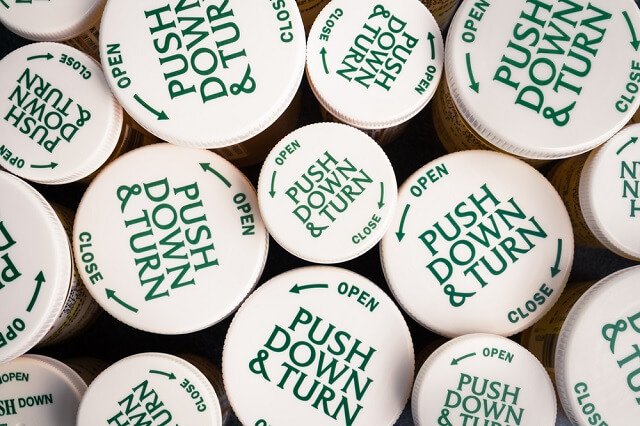
Free Consultation(203) 447-0000

Free Consultation(203) 447-0000

When we put something into our bodies, we need to know that it is medicine, not poison – especially if we are already sick. Unfortunately, some drugs do double duty as poisons for certain people with certain conditions. Alternatively, if the drug was improperly approved by the US Food and Drug Administration (FDA), it could operate as a poison for everyone who takes it.
In some cases, the dangers are inherent and unavoidable. In other words, some life-saving drugs come with dangerous side effects (certain chemotherapy drugs, for example), and sometimes their harmful side effects are outweighed by their utility, especially when being used to treat a desperately ill patient. The following is a list of 10 of the most dangerous drugs on the market (the list could be much longer).
Although as of August 2019 the FDA has not recalled Invokana, it has ordered the manufacturers to provide strong and prominently displayed product warnings about the risk of leg and foot amputations. The FDA has also issued three safety warnings about the product. The FDA’s concern was caused by the results of two large clinical trials concerning the link between Invokana and the risk of amputation.
Clinical studies suggest a link between Lipitor and type-2 diabetes in women. Lipitor lawsuits are common (over 1,000 have been filed so far), and many more are expected in the future. These lawsuits allege that Pfizer knew about the possible side effects of Lipitor but failed to warn the public.
Overdoses often occur when methadone is combined with other drugs, whether legal or illegal and when someone tries to reduce their dependency by taking less and then returns to their previous higher dosage after their tolerance to the drug has gone down. The use of methadone has generated many lawsuits, and it is also available on the black market.
Prozac has been the subject of several lawsuits. In one well-known case, Eli Lily faced a lawsuit arising from the behavior of a Prozac user who murdered his co-workers and then committed suicide. Eli Lily has paid tens of millions of dollars in settlements over claims involving similar mood disturbances and irrational behavior. Other lawsuits have claimed that Prozac causes birth defects.
These lawsuits typically claim that the doctor failed to appropriately examine or consider the patient’s substance abuse history before prescribing the drug to them. Xanax overdose deaths have generated many wrongful death lawsuits.
Under the Connecticut Product Liability Act, a product liability claim arises when someone is injured or killed by a defective, unreasonably dangerous consumer product. The term “consumer product” includes pharmaceuticals, whether they are prescribed or sold over the counter. To win a claim based on a defective drug, you must prove:
Some drugs are considered dangerous but not “unreasonably dangerous” because the danger is unavoidable and because the usefulness of the product justifies accepting the increased risk. Imagine a life-saving cancer drug that increases a person’s risk of cardiac arrest from 0.1 percent to 1 percent (a tenfold increase). If it was the only treatment available for a type of cancer that would otherwise almost surely kill its victim, the risk of using it might be justified.
Nevertheless, pharmaceutical companies are expected to warn both doctors and patients of all significant risks of using the product. Doctors must be properly warned so that they can accurately calculate the risk vs. reward ratio of prescribing it to a sick patient. Failure to warn is considered a product defect just as manufacturing and design defects are.
If your doctor prescribed you a drug manufactured by XYZ Pharmaceutical Company and you are harmed when you take it, should you claim against the drug manufacturer (or distributor) for a defect in the drug or against the doctor for prescribing it to you? In other words, do you have a product liability claim or a medical malpractice claim? The answer is that, in some cases, you will have one claim but not the other, while in other cases, you can assert both claims.
Your doctor, for example, may not have been fully informed of the dangers of the drug because the drug company suppressed this information. Alternatively, if the drug’s warnings include the statement “Should not be taken by pregnant women”; you are pregnant and your doctor prescribed it to you anyway; a medical malpractice claim might be appropriate. If the drug was unreasonably dangerous even for people who are not pregnant, you might have two claims.
If you have been harmed by a dangerous drug, in addition to claiming against your healthcare provider and/or the drug manufacturer, you might consider the following options, depending on the circumstances:
Under Connecticut law, it is possible to sue multiple defendants at the same time for the same injury or illness.
You might not even know for certain whether the health problems you are experiencing are related to your use of a particular prescription drug or whether you have a valid personal injury claim – even if there is a relationship. That’s OK because that is what we are here for. And we have been helping clients like you obtain justice for many, many years now.
Contact us online for a free case consultation. We serve clients in Connecticut from our offices in Stamford, Bridgeport, Danbury, and Shelton. And remember: you owe us nothing until we win your claim. If we don’t, our services are free of charge.
Berkowitz Hanna
